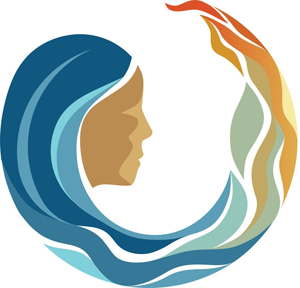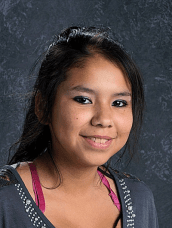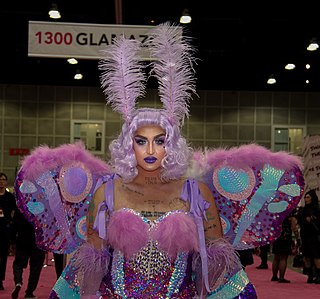According to a U.S. Department of Justice study, men rape and sexually assault Native American women more than 2.5 times than any other ethnicity. The same study shows that men victimize Native American women the most by all races out of all populations in the United States.

The Native Women's Association of Canada is a national Indigenous organization representing the political voice of Indigenous women, girls, and gender-diverse people in Canada, inclusive of First Nations on and off reserve, status and non-status, disenfranchised, Métis, and Inuit. An aggregate of Indigenous women's organizations from across the country, NWAC was founded on the collective goal to enhance, promote, and foster the social, economic, cultural and political well-being of Indigenous women within their respective communities and Canadian societies.

The Missing Women Commission of Inquiry was a commission in British Columbia ordered by the Lieutenant Governor in Council on September 27, 2010, to evaluate the response of law enforcement to reports of missing and murdered women. The commission concluded its Inquiry in December 2012, and outlined 63 recommendations to the Provincial government and relevant law enforcement. The Inquiry itself received criticism from various civil society group and Indigenous communities, regarding its investigative structure, as well as, the lack of government action after the Inquiry to fulfill its recommendations.

Two-spirit is a modern, pan-Indian, umbrella term used by some Indigenous North Americans to describe Native people in their communities who fulfill a traditional third-gender ceremonial and social role in their cultures.
Native American feminism or Native feminism is, at its root, understanding how gender plays an important role in indigenous communities both historically and in modern-day. As well, Native American feminism deconstructs the racial and broader stereotypes of indigenous peoples, gender, sexuality, while also focusing on decolonization and breaking down the patriarchy and pro-capitalist ideology. As a branch of the broader Indigenous feminism, it similarly prioritizes decolonization, indigenous sovereignty, and the empowerment of indigenous women and girls in the context of Native American and First Nations cultural values and priorities, rather than white, mainstream ones. A central and urgent issue for Native feminists is the Missing and murdered Indigenous women crisis.

Missing and Murdered Indigenous Women (MMIW), also known as Missing and Murdered Indigenous Women and Girls (MMIWG) and Missing and Murdered Indigenous Relatives (MMIR), is an epidemic of violence against Indigenous women in Canada and the United States, notably those in the FNIM and Native American communities, and a grassroots movement to raise awareness of MMIW through organizing marches; building databases of the missing; holding local community, city council, and tribal council meetings; and conducting domestic violence trainings and other informational sessions for police.

Tina Michelle Fontaine was a First Nations teenage girl who was reported missing and died in August 2014. Her case is considered among the high number of missing and murdered Indigenous women of Canada, and her death renewed calls by activists for the government to conduct a national inquiry into the issue.

Michèle Taïna Audette is a Canadian politician and activist. She has served as president of Femmes autochtones du Québec from 1998 to 2004 and from 2010 to 2012. She was also the president of Native Women's Association of Canada from 2012 to 2014. From 2004 through 2008, she served as Associate Deputy Minister at the Ministry of Relations with Citizens and Immigration of the Quebec government, where she was in charge of the Secretariat for Women.

Bernadette Smith is a Canadian First Nations politician who was elected to the Legislative Assembly of Manitoba in a by-election on June 13, 2017. She represents the electoral district of Point Douglas as a member of the Manitoba New Democratic Party.
Bridget Tolley is a Canada-based Algonquin community worker, women activist and the founder of Families of Sisters in Spirit (FSIS).
Rosalie Fish is a Native American runner, member of the Cowlitz Tribe, former student athlete at Iowa Central Community College, currently studying and running for the University of Washington. As a senior at Muckleshoot Tribal School, Fish made international headlines when she painted a red handprint over her mouth, the fingers extending across her cheeks to honor the lives of missing and murdered indigenous women. Rosalie Fish has also been a featured speaker for Tedx Talks.

The REDress Project by Jaime Black is a public art installation that was created in response to the missing and murdered Indigenous women (MMIW) epidemic in Canada and the United States. The on-going project began in 2010 and commemorates missing and murdered indigenous women from the First Nations, Inuit, Métis (FNIM), and Native American communities by hanging empty red dresses in a range of environments. The project has also inspired other artists to use red to draw attention to the issue of MMIW, and prompted the creation of Red Dress Day.
The Sisters in Spirit initiative was a program led by the Native Women's Association of Canada (NWAC) and funded by Status of Women Canada. Beginning in 2005, the initiative was an effort to research and document the statistics of violence against Indigenous women in Canada. It also sought to heighten awareness and education regarding the treatment of Indigenous women, and ultimately influence policy to address these issues through documenting the lived experience of Indigenous women and highlighting the underlying causes of this violence.

Ilona Verley is a Canadian-American drag queen, most known for competing on the first season of Canada's Drag Race.
Red Dress Day, or Red Dress Campaign, is an annual event held by the REDress Project in memory of the lives of Missing and Murdered Indigenous Women and Girls across Canada. This event was originally held on May 5, 2010, and continues annually. The event is sometimes held on other dates throughout the year to coincide with other days of action, such as National Indigenous Peoples Day. Associated names with this event include National Day of Awareness For Missing and Murdered Indigenous Women And Girls. Red Dress Day is one of several campaigns started by activists to call attention to disproportionate rates of violence against Indigenous women.
Drag the Red is a community volunteer organization in the Canadian province of Manitoba. Founded in 2014 by a group of co-founders that included Kyle Kematch and MLA Bernadette Smith, the organization aims to address the issue of missing and murdered Indigenous women and girls by searching in and around the Red River of the North for bodies or evidence of missing persons.
Jaime Black is of Anishinaabe and Finnish descent. This Canadian multidisciplinary artist-activist is focused on First Nations and Indigenous representation and identity. She identifies as Métis, an ethnic group native to the three Prairie Provinces as well as parts of Ontario, British Columbia, and the Northwest Territories of Canada and the Northern United States, which traces descent to both Indigenous North Americans and Western European settlers. Black is best known for her art installation The REDress Project that she created as a response to the Missing and Murdered Indigenous Women (MMIW) crisis in Canada as well as the United States. A 2014 report by the Royal Canadian Mounted Police found that more than 1,000 Indigenous women were murdered over the span of 30 years from 1980 to 2012. However, some Indigenous advocacy groups dispute these reports arguing that the number is much greater than the government has acknowledged.
Marika Sila is a Canadian Inuvialuk actress, content creator, and social activist. Born in Yellowknife, Northwest Territories, her family moved to Canmore, Alberta when she was five years old. Olympic cross-country skier Jesse Cockney is her older brother.
Patricia 'Patsy' L. Whitefoot is a member of Yakama Nation, is Indigenous elder, activist and professional educator along with being the traditional food gatherer for the Toppenish Creek Longhouse. She served as the President of the National Indian Education Association and President Obama appointed her as a member of the National Advisory Council on Indian Education. She is a prominent advocate for Missing and Murdered Indigenous Women, and Indigenous rights.
Missing and Murdered is a true crime podcast investigating the disappearances of Indigenous people in Canada, also known as the Missing and Murdered Indigenous Women crisis. It is produced by the Canadian Broadcasting Corporation and hosted by Cree journalist Connie Walker.









